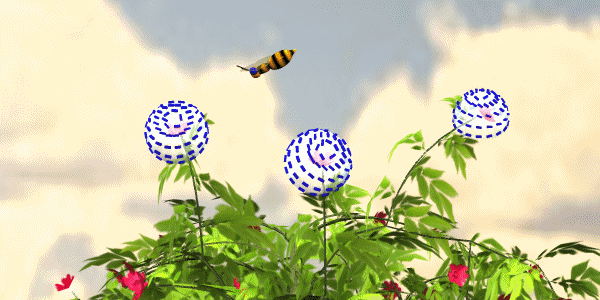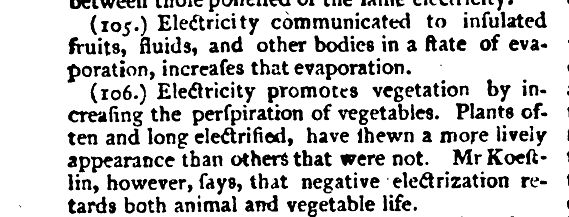Friday, February 22, 2013
Shepardson again
This morning's science news about bees and ions adds another piece to the old Shepardson puzzle. Polistra has been following an old idea, written up by George Shepardson in 1901, that (some) plants live more by trading electrons than by absorbing sunlight.
Today's item indicates that (some) plants use negative charge intentionally to attract bees. When a flower is ready for bee service, the plant charges it negatively. Bees, who are always charged positively from the friction of flapping around in the air, sense the negative field and head for it. The contact of bee to flower discharges both sides, so the bee can tell which flowers are used up.
 Shepardson's special theme was that pointy things act as centers for charge transfer. Pine needles have very little sunlight-absorbing area and excellent charge-absorbing qualities, so it's reasonable to assume that their main function is to gather electrons, not to gather sunlight. Similarly, bumblebees are hairy so they can sense the static signals from flowers.
= = = = =
Ancient sidenote, from 1816 'Encyclopedia Perthensis'.
Shepardson's special theme was that pointy things act as centers for charge transfer. Pine needles have very little sunlight-absorbing area and excellent charge-absorbing qualities, so it's reasonable to assume that their main function is to gather electrons, not to gather sunlight. Similarly, bumblebees are hairy so they can sense the static signals from flowers.
= = = = =
Ancient sidenote, from 1816 'Encyclopedia Perthensis'.

 Shepardson's special theme was that pointy things act as centers for charge transfer. Pine needles have very little sunlight-absorbing area and excellent charge-absorbing qualities, so it's reasonable to assume that their main function is to gather electrons, not to gather sunlight. Similarly, bumblebees are hairy so they can sense the static signals from flowers.
= = = = =
Ancient sidenote, from 1816 'Encyclopedia Perthensis'.
Shepardson's special theme was that pointy things act as centers for charge transfer. Pine needles have very little sunlight-absorbing area and excellent charge-absorbing qualities, so it's reasonable to assume that their main function is to gather electrons, not to gather sunlight. Similarly, bumblebees are hairy so they can sense the static signals from flowers.
= = = = =
Ancient sidenote, from 1816 'Encyclopedia Perthensis'.

Labels: 20th century Dark Age, bee, Grand Blueprint
